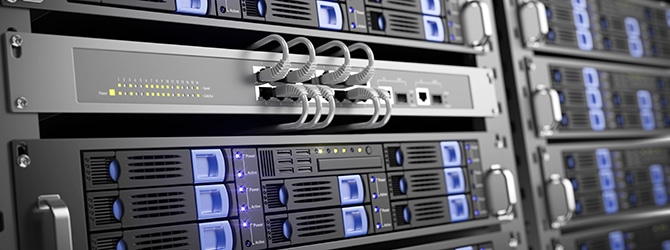Why Is High Availability Important To Your Organization’s Cloud Strategy?

The ServerMania Cloud supports business-critical operations for a huge number of organizations that can’t risk having their services offline for even a second. But no server, hard drive, or network connection is 100% reliable — components fail and they fail unpredictably.
Let’s take a look at some of the work we’ve done to make sure the inevitable failure of a component on our cloud platform has no effect on the performance and uptime of the sites and services it hosts.
Our cloud infrastructure is built on a complex foundation of hardware and software. Because all of these parts are interdependent, the failure of any one component can mean the failure the system as a whole. A single point of failure puts the whole system at risk. But when a system, like the ServerMania Cloud is designed for high-availability, it uses redundancy to ensure that there are no single points of failure.
Our goal is to make infrastructure deployment and management as easy and reliable as possible for our customers. Customers can deploy servers onto our cloud platform with the click of a button or an API request. Beneath the interface that our customers see is a lot of complex engineering that includes physical servers, storage arrays, network hardware, external network connections, load balancers, a virtualization layer, and an extensive software stack.
Component Failure and Fault Tolerance
These components depend on each other and, without redundancy, a failure of any one could mean the failure of the platform as a whole. If, for example, a fault develops in the storage that holds an important customer database, the effectiveness of the entire cloud platform could be compromised for that customer. The same is true of network connections; if a network connection fails, any sites and services running in the cloud could be cut off from the outside world.
Any component essential to the health of the entire system is a single point of failure. Traditional hosting environments are riddled with single points of failure. Consider the shared hosting environment used by many low-traffic websites; typically, each server will be crammed with as many sites as possible. If a fault develops with any part of the server, all of those sites will be offline.
Clearly that’s not acceptable for business critical services running in the cloud, which is why the ServerMania Cloud is designed to offer high-availability.

A system, like ours, designed for high-availability, uses redundancy to ensure that there are no single points of failure. It’s impossible to guarantee that any single component is reliable over the long-term. In fact, you can guarantee that a part of the system will fail at some point. High-availability systems don’t rely on any one component. Rather the system as a whole is designed to be reliable.
Every part of our high-availability cloud has redundant backup systems and a failover mechanisms. If one of our servers develops a fault, our system will detect the failure, remove the server from the pool, and all operations will be transferred to a redundant server within seconds and without downtime. The same is true of network connections, storage, and various other parts of our cloud platform. We have engineered our cloud infrastructure so that the failure of one or several components doesn’t reduce the reliability of the system as a whole.
If performance, high-availability, and built-in fault tolerance is critical for your business, let’s talk. We’ve got the infrastructure you need and will work with you to ensure your project is insulated against any type of failure. Get in touch with our team today!
Was this page helpful?

